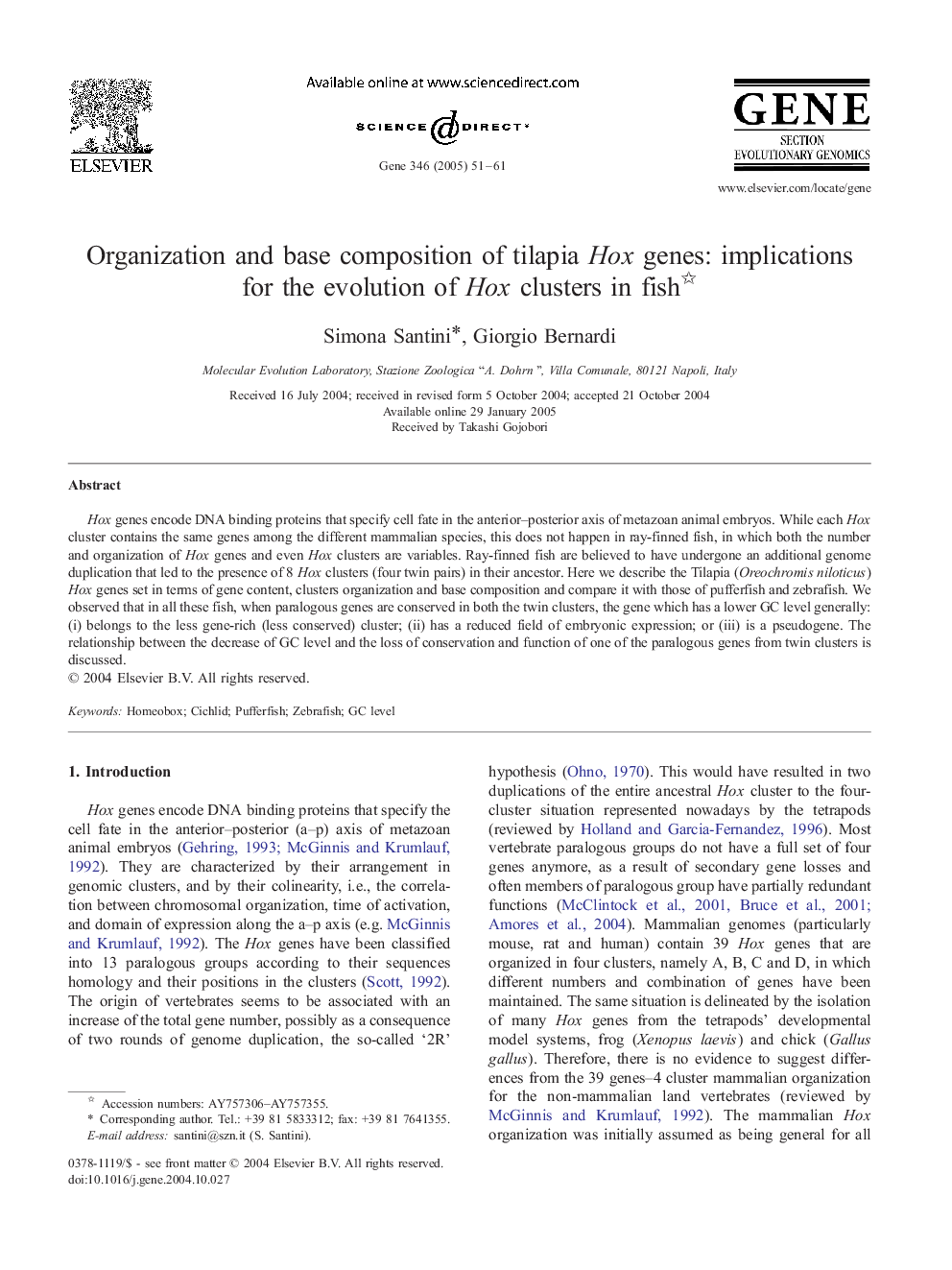| Article ID | Journal | Published Year | Pages | File Type |
|---|---|---|---|---|
| 9127148 | Gene | 2005 | 11 Pages |
Abstract
Hox genes encode DNA binding proteins that specify cell fate in the anterior-posterior axis of metazoan animal embryos. While each Hox cluster contains the same genes among the different mammalian species, this does not happen in ray-finned fish, in which both the number and organization of Hox genes and even Hox clusters are variables. Ray-finned fish are believed to have undergone an additional genome duplication that led to the presence of 8 Hox clusters (four twin pairs) in their ancestor. Here we describe the Tilapia (Oreochromis niloticus) Hox genes set in terms of gene content, clusters organization and base composition and compare it with those of pufferfish and zebrafish. We observed that in all these fish, when paralogous genes are conserved in both the twin clusters, the gene which has a lower GC level generally: (i) belongs to the less gene-rich (less conserved) cluster; (ii) has a reduced field of embryonic expression; or (iii) is a pseudogene. The relationship between the decrease of GC level and the loss of conservation and function of one of the paralogous genes from twin clusters is discussed.
Related Topics
Life Sciences
Biochemistry, Genetics and Molecular Biology
Genetics
Authors
Simona Santini, Giorgio Bernardi,
